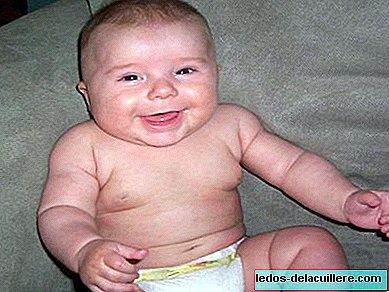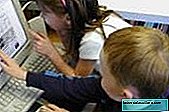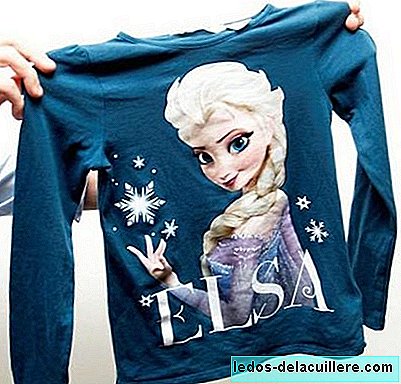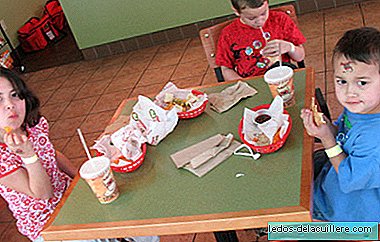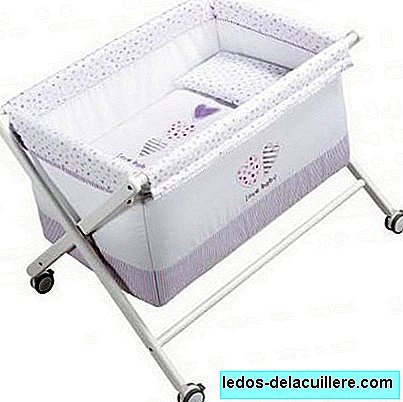
We are accustomed to the introduction of new foods in the baby's diet using porridge and purees. But Do you really need to give babies porridge? What did the first human babies eat?
Today, according to the pediatrician or the medical center we find that we are given a list of foods that we should give the child. Breastfed babies should not be introduced into complementary feeding before their sixth month of life, but this is not always followed by professionals. Some send you cereals with milk, others porridge of fruits and other vegetables. If we talk about the guidelines and recommendations in each country, the differences can be notable.
Actually it does not matter too much with what kind of food we start, as long as we do it at the right age and following a pattern that allows to detect intolerances, introducing the different products gradually. Using natural and unprepared industrial foods is a very safe and healthy option that ensures nutrients, avoids unnecessary additives and, above all, allows the baby to discover natural flavors.
But back to the subject of the article. Porridge yes or no?
To give a baby solid food, he must be able to sit and have lost the extrusion reflex. There should be no hard chunks and the food must be suitable for your age. But there is no need to pass everything through the blender or turn it into a liquid porridge. Children need food when they are ready to feed them.
Babies, in the non-Westernized tribes that have been studied, often have an introduction of food at different ages according to culture. Also the products that are given as suitable to discover solids are completely diverse and native.
It is curious to note that mothers often crush food with their teeth and give them half chewed. Moreover, anthropologists consider this gesture to be the origin of the kiss, a symbol of love and a reflection of the erotic drive of orality.
Also, the cereal cooking crushed making a kind of porridge is one of the first culinary preparations that humans surely adapted once they based their food on the typical cereals of each area. Therefore it is not wrong to assume that babies would take the same cereal porridge as adults.
The question of gluten, which is given so much importance in our culture and in our medicine, does not seem to have been the subject of reflection before, but really the detection of gluten intolerance is something very modern since it is not evident.
Anyway, currently, work is being done on new research that seems to point out that the late introduction of gluten in breastfed babies is not such an obvious imperative issue. It is valued that an introduction in very small amounts may be safer gradually instead of delaying its use. Better to give a cookie early than to poke a wheat porridge a little later. That is, rather it is indicated that it is convenient to introduce it before weaning and with the child receive breast milk six months exclusively as advised by health protection agencies. But, of course, it should not be given before six months.
If the child is breastfeeding I have not found different guidelines and the greater vulnerability of his digestive system may advise extreme caution in this matter. Anyway, since you drink artificial milk, possibly using natural cereals instead of processed products add a natural nutritional value to your diet.
Since conducting completely reliable scientific studies on this gluten issue is very complicated, I believe that the data on this issue will never be clear at all. A future study can disassemble the above. I will investigate more.
The cereals and tubercles Traditionally used are corn, rice, wheat, oats, millet, barley, rye, quinoa, cassava, potato, cassava and taro among others. All are valid and in each culture one or the other is used. Already in the Paleolithic we consumed cereals but with the Neolithic and the expansion of agriculture they became the safe base of food.
So we can deduce that our ancestor babies would take crushed ripe fruits, pre-chewed meat and cereal porridge as first foods, although breast milk would be the basis of their diet, providing them with essential nutrients, for sure several years.
Children's food is no longer necessary to chew, although I am not entirely sure if everything is advantageous in that. Of course it is more hygienic and we certainly stop passing bacteria from our mouth, especially caries. I think most of us will prefer the blender or a food processor than using the mouth or a mortar.
But not all were disadvantages in the introduction to food through premastication. Now we do not give them the possible benefits of a food that has already been modified by our saliva, which would already be ingested modified, helping your immature digestive system. What do you think about it? Do you know if your grandparents were given chewed food?
Even so, the porridge resulting from the cooking of crushed tubers or cereal are the staple food of many cultures, premastication would be for harder foods. However, this is a personal reflection and I lack data to be sure if we have won or lost with the change. And I would not advise anyone to return to the habit of pre-mastering meat or fruit.
The texture of porridge and purees is adequate because it prevents choking, but it is not the only option. Crushing a ripe banana, a pear or a carrot between clean fingers offers the possibility, from an early age, to taste a less uniform texture. There are also hairnets in which the food can be put so that the baby sucks it, without any danger of choking, enjoying the discovery of the food in a way that is not simply opening the mouth so that they give it a spoonful.
Basically, solid food has two utilities, offering the nutrients that milk does not cover after a certain age and also making the pleasure of feeding, savoring and doing it available to the child. They will not eat porridge a lifetime, so when possible, and it is in each child at different times, you must allow him to discover new textures so that he can share the food of the rest of the family as soon as possible and decide in a much more active way the food It will take and the amount you need at each moment.


